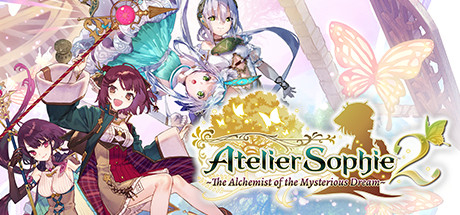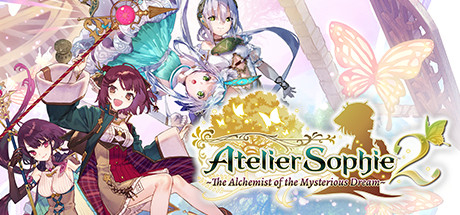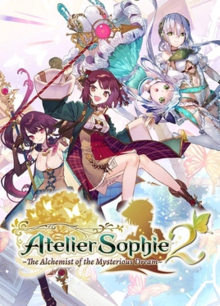
Atelier Sophie 2: The Alchemist of the Mysterious Dream (PS4) - Review
by Thomas Froehlicher , posted on 23 March 2022 / 2,936 ViewsThose who read my reviews and other articles know that I haven't been happy with the shift brought to Atelier by the Ryza sub-series. Despite some improvements to the traditional role-playing/alchemy mix, I had the disturbing sensation that Gust was slowly destroying the identity of the series, especially with Atelier Ryza 2. The developer shifting to release an Atelier Sophie 2 instead of Atelier Ryza 3 makes me suspect that perhaps others in the fanbase shared my opinion. But how successfully can Gust recover Atelier's former glory?
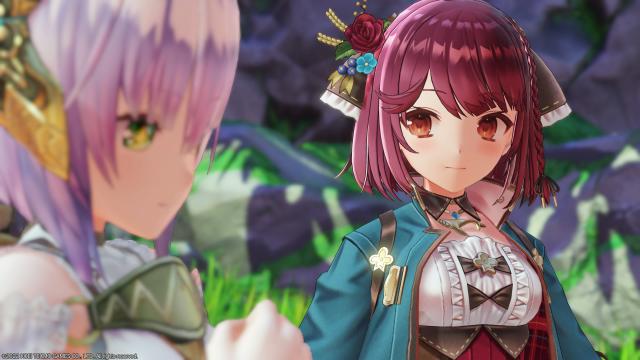
Let's be honest, Gust has been pretty bad at telling stories for a couple of years now. True, Atelier games aren't known for having strong narratives, but Atelier Sophie 2 unfortunately has an especially weak one. Sophie and her mentor Plachta are sucked into another dimension while journeying to study alchemy. Sophie lands in a place called Erde Weige, but Plachta is nowhere to be seen. Lost in an unknown world, Sophie seeks allies in order to find her friend.
In addition to saving Plachta, Sophie will decide to save the land around Erde Weige and its goddess Elvira. I just find it frankly strange that she becomes to suddenly eager to save a place she was brought to against her will. Nor does Sophie grow particularly close to Elvira. On top of that, Erde Weige, the land of dreams, is supposed to be an idyllic place where people can fulfill their wishes, and yet there is very little illustration of that in the game, even through the main character stories. There's certainly a lot of emotional potential in these topics, but I don't think that Gust put enough effort into developing a strong lore to support them.
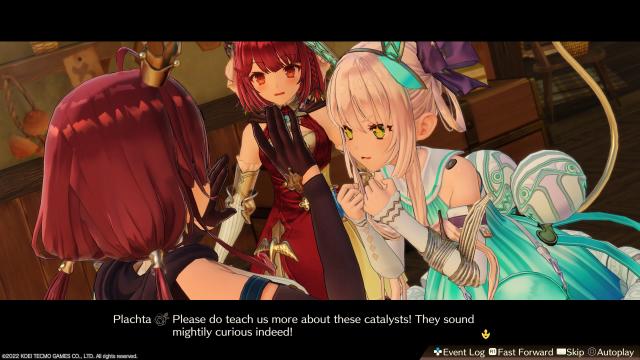
Despite my initial remarks painting a slightly gloomy picture, Atelier Sophie 2 does fix a number of elements that made Ryza's adventures ultimately quite depressing. I liked the characters here far more than Ryza's cast. Atelier Ryza and its sequel gave the impression of normalizing character interactions with mainstream themes like childhood and love, but ended up becoming increasingly boring. This time, Gust has created extravagant party members, funny clothing, cuter girls, and more adorable personalities.
Plachta's younger self is the perfect model of an eccentric young alchemist bossing people around, like we had in Ilmeria or Lucia not so long ago. Her voice acting, performed by Yuka Iguchi (who also voiced Mimi in Atelier Totori), is terrific and beyond all expectations. In a totally opposing style, the character of Diebold has all the charisma and style befitting a cool knight. I find the overall character designs a lot more likable here, and more in line with the Atelier that I know and love. Character interactions are more entertaining because the humorous tone is genuine, as in the pre-Ryza era. You no longer have to suffer through the constant whining of countryside pre-teens lacking a goal in life. It's fun again.
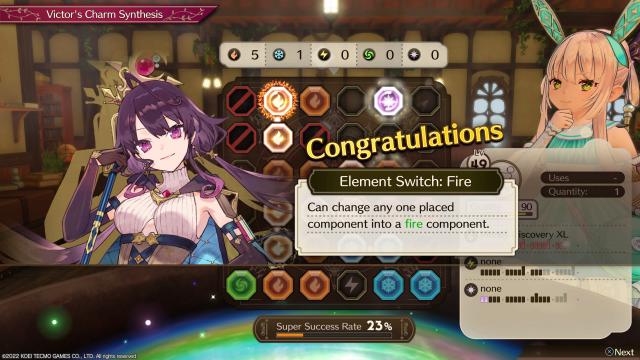
But of course the heart of the game is the mix between alchemy and battle. As always you have to craft everything of use from your cauldron: weapons, armor, accessories, attack & healing items, gathering tools, and so on. First you'll need to go outside of town to collect the materials you need to then make the items that will progress the story. The alchemy system won't surprise anyone who played the original Atelier Sophie, as it inherits the panel with little squares that you put the ingredients into. Ingredients are represented by geometrical forms, so basically you fill in all the squares and your alchemy product is done.
Needless to say, it's not quite that simple. Forms have colors, which are tied to a natural element (fire, ice, wind, and thunder). The item's quality highly depends on your ability to pour the correct amount of each element. For example, the Gnade Ring improves the strength, defense, HP, and speed of a character if you manage to cram enough of the four elements onto the panel. If you end up with a large amount of red tiles, though, only the strength stat will be boosted. But you must also consider another factor: some points have links (represented by a star in the ingredient details) that connect the colored forms together. At a higher level you need to link a large number of squares in order to unlock the powerful effects that will make your equipment highly efficient in battle.
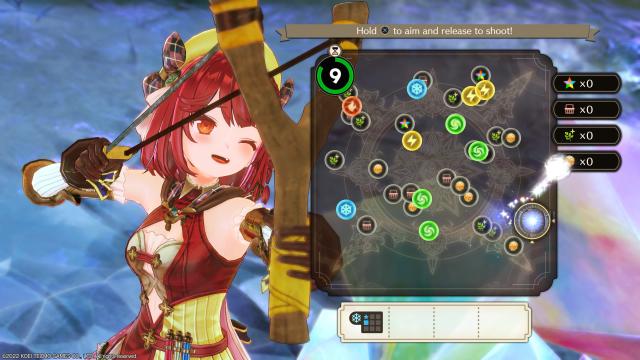
This is critically important when it comes to making gathering tools. Sophie has a set of tools needed to gather materials: a pickaxe to split rocks, a pole for fishing, a net to catch bugs, etc. All of those tools have a level attached to them and you can gather only material corresponding to that level. If your pickaxe is level 1, you'll only have access to level one ore. You need to craft a level 2 pickaxe if you want to get different types of ore, which will be required later in the game. Level 3 items are seriously difficult to make, requiring full knowledge of catalysts. Catalysts are key alchemy items that can enlarge the alchemy panel (so you can insert more ingredients) and trigger special rules that make your synthesizing more effective. For example, the Resolia catalyst changes the color of any neighbouring tile each time you insert something. It's very tricky to use, but essential at times.
Additionally, in Atelier Sophie 2 the gathering system has you playing several different mini-games, which reward you with better or more materials. This is a small but nonetheless entertaining innovation (the trickshot mini-game is particularly fun).
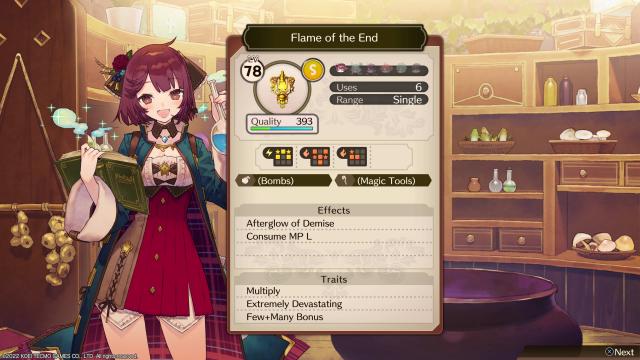
There are countless alchemy products to be discovered. Sophie and Plachta both have a list of recipes you need to unlock them, meaning that you can actually synthetize as Sophie or Plachta (this is highly appreciated). Various conditions need to be met so as to increase their repertoire, from hunting special monsters, to finding a rare object, creating a certain object, and so on. As usual, increasingly powerful traits lie in materials found in the wild (HP+100, better healing, etc.). Using them allows you to transfer their characteristics to weapons, armors, and other items. In Atelier Sophie 2 you also find a few hidden traits that work a bit like treasure quests - they give no obvious advantage but include little hints about which other trait they might work well with. So if you manage to combine the right ones, you can acquire super strong passive skills. Scholar King is the highest ranked trait for weapons, and adds 50 to attack, defense, and speed for the whole team.
Alchemy in Atelier Sophie 2 is a game within a game. It might be less precise than the system in Atelier Ryza, but it's more challenging and exciting. I was actually satisfied with the alchemy system in Ryza, but here it feels like it's been elevated to a whole new level; it's like a giant puzzle mini-game where the player's wits are really put to the test. Many of the sub-quests and main challenges also have quality requirements, which I don't think has been the case since Atelier Totori over ten years ago.
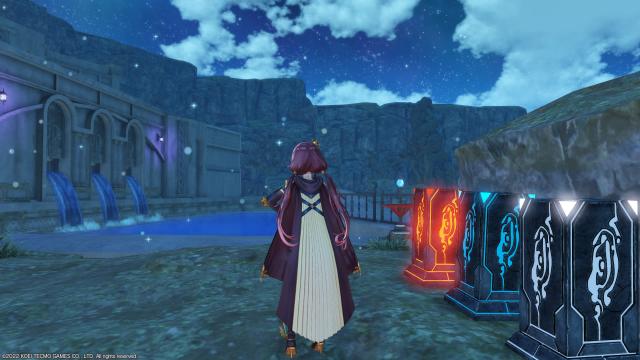
Erde Weige is a fairly large world, but partitioned in the usual Atelier way. That means you have to walk through dungeons which are themselves divided in countless mini-maps made of corridor-like paths full of materials. In today's Genshin Impact era, the world of Atelier Sophie 2 isn't exactly exciting to explore. The main new feature that the game pushes here is weather management. You can change the current weather thanks to special stones - Sophie can for example call the rain, then use the snow stone to freeze the water and move forward. That said, this system never results in elaborate puzzles; it's ultimately about as interesting as switching the power on and off all the time. I can't help thinking that it could have been more complex and widely used. You can change the weather only during a handful of boss fights, for example, whereas I imagined significant use of weather control during boss battles. Ultimately it feels very gimmicky, and means Atelier Sophie 2 is left lacking that one special feature which makes it really unique, like Meruru's town building or Firis's sprawling open world.
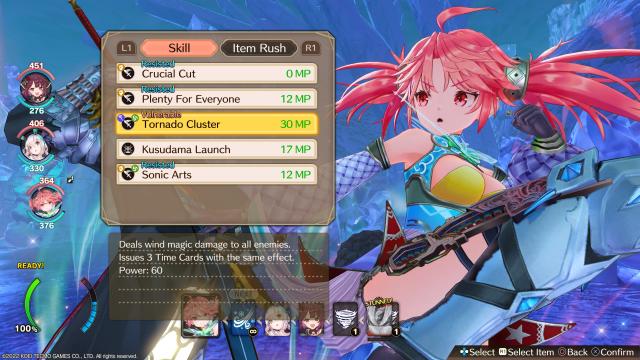
The battle system is another area where Gust has put the Ryza era to one side and gone back to something more conservative. Sophie 2 welcomes back the traditional turn-based system where the player has ample time to think through their strategy. Much like in Atelier Lulua, you have three active characters and three others in the back row, with lots of possible interactions between them. Fighters can relieve each other, which allows you to save one turn, MPs, and block enemy attacks. More occasionally, two allies can cooperate in super attacks called Dual Trigger. Although they are undoubtedly powerful, they're rather unimpressive visually. Goofy, slack, and needlessly long, Dual Triggers look a bit off, especially when you consider the long tradition of epic moves in JRPGs. It's light years from the dynamism recently seen in Tales of Arise and, strangely, less punchy than the equivalent systems found in prior Atelier games.
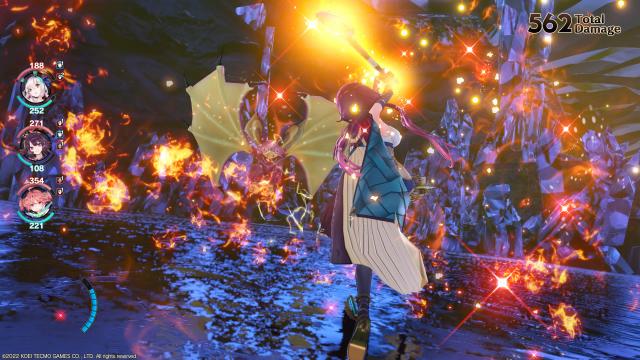
Enemy shields, called "auras", are the major new addition to battles. Fiends shrouded in auras receive little to no damage, so you have to break the aura first. There are different types of auras and different ways to counter them - the fire aura is more quickly dispelled by ice attacks, physical by magical attacks, and so on. Some skills and high-quality equipment also affect these auras, which helps against very tough bosses with high aura and HP counts.
Auras are the only genuinely new addition to the battle system, so Sophie 2 doesn't renew the series' battle system as much as Atelier Ryza did. Ryza's combat was definitely a nice evolution of the formula, although Atelier Ryza 2 later distorted it. Sophie 2, meanwhile, provides a more orthodox battle system centered on careful strategy and item use, which certainly makes combat interesting. I also applaud the redesign of the battle menu - it's both practical and elegant. The clever camera work and the cool battle/victory poses are also pleasant.
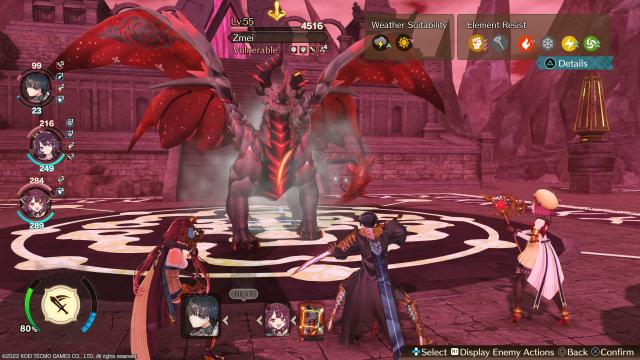
Overall, though, the graphics don't seem to have improved as much as Gust was boasting. Battles in particular aren't as spectacular as they've become in recent years, in Atelier Ryza and even Atelier Lulua. The town and fields are nothing special either. KoeiTecmo's reluctance to develop for the PS5 is a clue that the company doesn't really want to invest in improved visuals. Instead, we'll have to make do with outdated animations, barren landscapes, and the very same type of dragon we've been fighting against since Atelier Sophie seven years ago... yes, the same dragon, with the same moves, returning a dozen times! Still, the main characters do look very nice, and some of the skills are cool enough to make a show of things, so it's not all bad news on this front.
Atelier Sophie 2 is 60-80 hours long, offering a sizeable amount of content, including countless things to discover and plenty of absorbing alchemic challenges. But I am incredibly disappointed by two particular things: there are very few pieces of artwork in the whole game, and once again there's no multi-ending. Why were both features possible when Atelier was essentially limited purely to the Japanese market for sales, but no longer possible when the series is producing 500K sellers worldwide? Gust and KoeiTecmo really have an investment problem when it comes to Atelier and they should fix it.
Atelier Sophie 2 is a return to the traditional values and spirit of the series, when the path taken by Atelier Ryza 2 threatened to destroy that heritage. That alone is a clear cause for satisfaction, but add in likable characters, fun side events, a rich alchemy system, plus strategic battles, and Atelier old timers can once again feel at home, even if some important aspects are still lacking.
VGChartz Verdict
7
Good
This review is based on a digital copy of Atelier Sophie 2: The Alchemist of the Mysterious Dream for the PS4, provided by the publisher.
























